The principle and process of siphon pot brewing coffee explain the siphon pot scale in detail
Siphon pot, also known as plug pot, is a common tool for personal and specialty coffee shops to brew coffee. It has a history of more than 200 years. It needs to master the thickness of coffee powder, heat and coffee extraction time, so it belongs to a professional coffee utensil. Because of its special shape and working principle is very characteristic, this appliance is many people jokingly called chemical instrument, and its cooking process is regarded as chemical experiment, let's take a look at the working principle, structure and use of this coffee ware.
I. Main City Component of Siphon Pot
1, on the cup (for coffee powder and coffee mixing and extraction)
2. Lower cup (for water and coffee extract)
3. Lower cup bracket
4. Cover the cup
5, filter cloth (filtration)
6. Alcohol lamp (heating)
7. Alcohol lamp protective cover
8. Coffee powder spoon/stirring rod
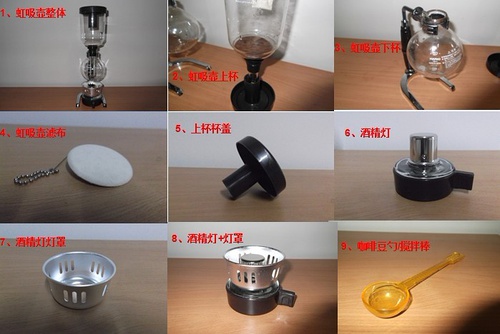
II. Working principle of siphon pot
The main principle of coffee extraction by siphon pot is realized by pressure difference. First, the water in the lower cup is heated to boiling, then the upper cup is inserted, so that the lower cup presents a vacuum state. Due to the pressure difference between the lower cup and the upper cup, the hot water goes up and mixes with the coffee powder in the upper cup and extracts it. After the extraction process, the fire source of the lower cup is removed, so that the pressure difference between the lower cup and the upper cup is instantly reduced. The gravity between the upper cup and the lower cup will promote the coffee extract to flow back to the lower cup. If you want to speed up the coffee extract reflux, you can wipe the lower cup with a wet cloth, which will make the pressure difference between the upper and lower cups smaller and the coffee extract reflux faster.
Third, the dosage standard of siphon pot
1, siphon pot under the cup of water dosage standard: general siphon pot has 2 people, 3 people and 5 people several kinds; 2 people represent 2 cups, each cup standard is 120ml, its maximum capacity is 240ml;3 people represent 3 cups, each cup standard is 120ml, its maximum capacity is 360ml;5 people represent 5 cups, each cup standard is 120ml, the maximum capacity is 600ml; The scale on the siphon pot represents the capacity, and the water capacity is N*120m if it is marked with a few scales; take a 3-cup siphon pot as an example, as shown in the following figure.
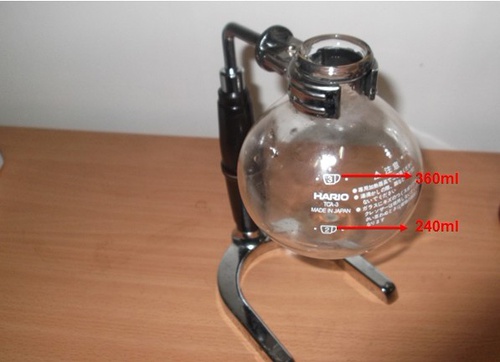
2, siphon pot coffee powder dosage standard: generally use siphon pot to boil a cup of coffee (120ml/cup) the amount of coffee powder required is about 15g, siphon pot corresponding coffee powder spoon is usually 10g/spoon, that is, a cup of coffee needs to add 1 spoonful and a half coffee powder amount; do a few cups of coffee according to the corresponding powder amount to add it; for example, do two cups of coffee usually add 3 spoonfuls of coffee powder, that is, 30g coffee powder, its scale spoon as shown in the figure below:

To sum up: to make a cup of coffee requires 120ml of water, corresponding to the need for 15g of coffee powder; to boil two cups of coffee requires 240ml of water, corresponding to the need for 30g of coffee powder; of course, according to personal taste can be appropriate to increase or reduce the amount of coffee powder per cup of coffee, generally floating between 10-20g.
IV. How to use the siphon pot
1. Grind coffee beans into coffee powder (if the preparation is coffee powder, omit this step)
Grind coffee beans into coffee powder; determine how many beans to grind and how much to brew according to the number of coffee cups to brew, and how much to grind and brew as recommended. Boiling a cup of coffee requires about 15g of coffee powder. To boil several cups of coffee, grind the corresponding amount of coffee beans.

2. Take out the upper cup of siphon pot, fix the filter cloth on the upper cup and hang the fixed hook on the glass conduit wall at the bottom of the upper cup, as shown in the figure below:
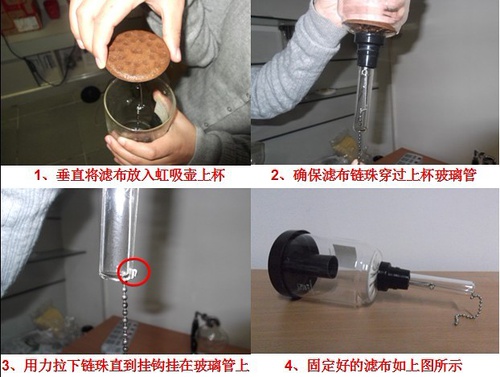
3. Add purified water or hot water to the lower cup of the siphon pot according to the number of cups to cook coffee, and pay attention to adding water to the corresponding scale, as shown in the following figure:

4. Add coffee powder to the cup of siphon pot, and add the corresponding coffee powder standard according to the number of cups to be cooked (refer to the coffee powder dosage standard of siphon pot), as shown in the following figure:

5. Insert the upper cup into the lower cup and lean it against the lower cup, as shown in the following figure:

6. Light the alcohol lamp and heat the lower cup of the siphon pot until the water in the lower cup boils and begins to bubble, as shown in the figure below.
7. When the water is completely boiled, straighten the upper cup and insert the upper cup vertically into the lower cup, so that the upper cup and the lower cup are seamlessly connected. Due to the temperature and pressure of the lower cup, the hot water in the lower cup rises until more than 95% of the water enters the upper cup.(There will always be some water residue in the lower cup of the siphon pot), keep the heating state of the alcohol lamp unchanged; at this time, you can adjust the heating center of gravity of the alcohol lamp appropriately, so that it slightly deviates from the bottom of the lower cup of the siphon pot (mainly to prevent excessive heating, resulting in the occurrence of cup cracking due to lack of water in the lower cup of the siphon pot), as shown in the figure below:
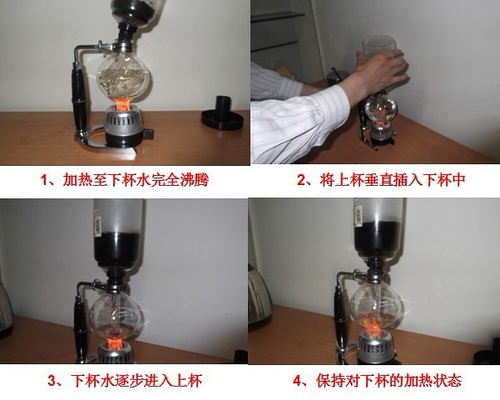
8. Coffee extraction: The whole cycle from the beginning of mixing to the completion of extraction into reflux is within 1 minute; first, after more than 1/3 of the water in the lower cup enters the upper cup, the fire can be slightly removed to reduce the fire, and then the coffee powder is stirred clockwise from the middle, this process lasts for 10 seconds to ensure that all the coffee powder is immersed in water; And then the clock starts, and 40 seconds pass.(This process is usually called stewing) Time to re-stir the coffee with a stirring rod in a counterclockwise direction for 5 seconds; then quickly remove the alcohol lamp and put out the fire, the coffee begins to flow back from the upper cup to the lower cup; In the process of coffee reflux, if you wipe the lower cup of the siphon pot with a wet cloth, you can speed up the cooling of the lower cup, reduce the temperature and pressure of the lower cup, and speed up the backflow of the upper cup of coffee. (Note: In the process of using the siphon pot, there are some different sounds, that is, when the coffee powder is put more reasonable, generally speaking, put the coffee powder first and lean the siphon pot cup against the lower cup to wait for the water to boil. The difference between the practice described in this article and the mixing of water from the lower cup to the upper cup is not particularly large. Generally speaking, the stewing time of the latter method can be increased from 40 seconds described in the appeal to 45 seconds.)
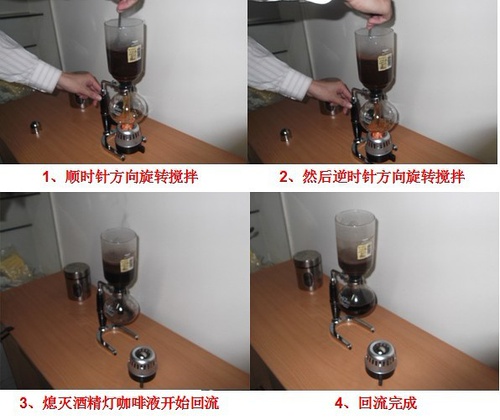
9. The brewed coffee is as shown in the figure:
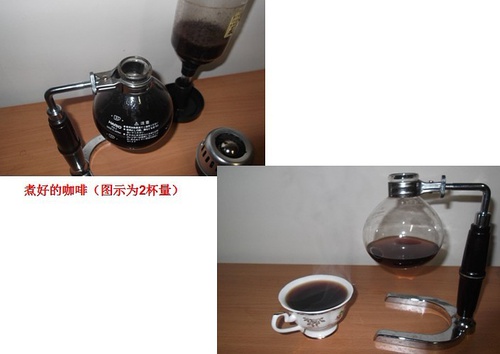
Sugar or milk can be added according to personal taste

5. Simple cleaning of siphon pot
1. Hold the glass tube in the upper seat with your hand, and gently tap the bottle mouth with the palm of your left hand three times.
Then tap three more times around the glass to loosen the coffee powder.
3. After pouring out the coffee powder, rinse the inner edge of the cup with water and turn it gently.
4, and then use clean water straight to the filter, so that the dregs are removed.
5. Remove the spring hook of the filter and wash it thoroughly with clean water.
6. Squeeze and twist dry with both hands (when not in use, please put the filter/cloth ice in water to avoid oxidation)
7, with a cup brush stained with detergent, scrub the seat, wash carefully when the bottle is broken, glass pipe hit the sink or cup, etc.
Important Notice :
前街咖啡 FrontStreet Coffee has moved to new addredd:
FrontStreet Coffee Address: 315,Donghua East Road,GuangZhou
Tel:020 38364473
- Prev
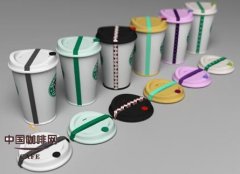
Green coffee cup Creative coffee cup the simplest environmentally friendly design
Betacup is an international design competition, its purpose is to make people pay more attention to such issues as environmental protection and resource utilization. Because it is sponsored by Starbucks, it is based entirely on Starbucks in the design of coffee cups. Of course, this is not a problem for the work itself, the significance and value of the design, and the way these designs are realized deserve our attention.
- Next

Comparison of siphon and hand washing on the scale of the lower pot of the siphon pot
I found that I have a complex for siphon pots, mainly from my experience of washing petri dishes and test tubes for no less than 10000 times in the microbiology laboratory. I can wash them without dripping water on them (there is no technical difficulty). But no matter how much you wash the siphon pot, it's impossible to do it. Comparison between siphon and hand pulping, we have said that in general, the thickness of coffee powder is proportional to the extraction time, that is to say, coffee.
Related
- What is the Philharmonic pressure? How to use Philharmonic pressure to make delicious coffee
- Why does a hand grinder have more fine powder than an electric grinder?
- In addition to the hot mom, what is the difference between the versions of EK43 | ditting and Mahdi ek43?
- What kind of equipment do you need to make coffee by hand? Introduction to novice starter cooking equipment tools
- Espresso needs to be ground how thick and thin scale entry Italian Coffee Machine Bean Grinder investigation and Grinding course
- How much does it cost to open a small private cafe? How much does it cost to learn coffee? How to operate it?
- The difference between the flavor characteristics of hand-brewed coffee and coffee maker is hand-brewed coffee really better than coffee maker? Can I use a coffee machine to make coffee beans by hand?
- The difference between 01 and 02 of hario v60 filter cup what is the difference between 01 and 02 filter cup opening and cooking flavor
- What's the difference between the smart cup and the French kettle? Which is better, the French kettle or the Smart Cup?
- What's the difference between a smart cup and a V60 filter cup? The difference between the taste of smart cup and hand-brewed coffee

